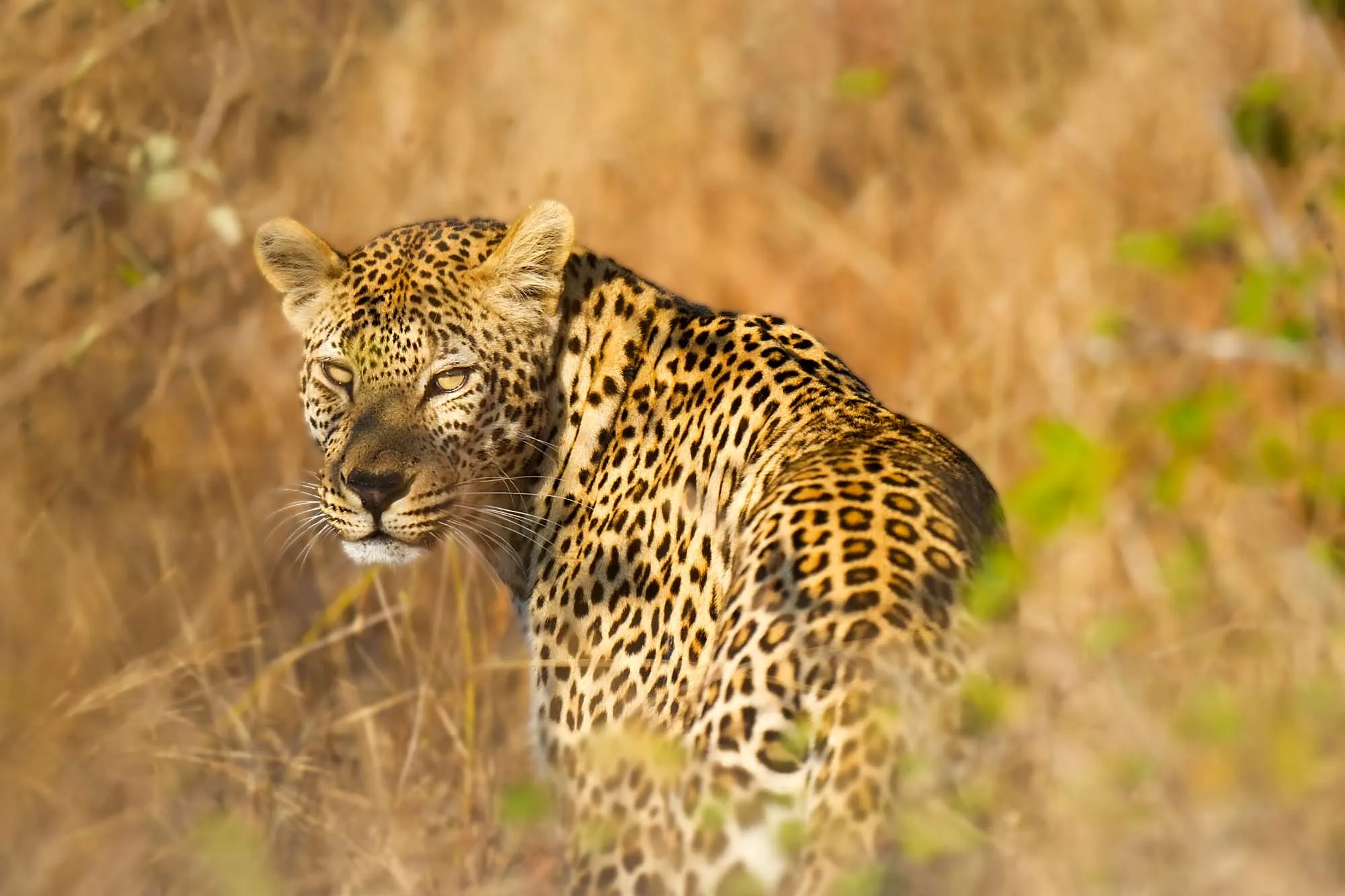10 Fascinating Facts about the African Leopard
10 Fascinating Facts about the African Leopard. The African leopard (Panthera pardus pardus) is a majestic and enigmatic big cat species that roams the diverse landscapes of Africa; Known for its elusive nature and striking spotted coat, the African leopard has captured the fascination of wildlife enthusiasts and researchers alike. In this article, we delve into 10 interesting facts about this remarkable feline.
Range and Habitat:
African leopards are highly adaptable and can be found in a wide range of habitats, from savannas and grasslands to dense forests and mountainous regions. They inhabit a vast territory, spanning across sub-Saharan Africa, from the rainforests of East and Central Africa to the deserts of North Africa.
Physical Characteristics:
The African leopard is characterized by its golden-yellow coat covered in distinctive rosette patterns. These rosettes act as effective camouflage, allowing the leopard to blend seamlessly into its surroundings. Leopards are muscular and compact, with a powerful build that enables them to climb trees and drag prey up to escape from scavengers.
Nocturnal Behavior: – 10 Fascinating Facts about the African Leopard
Leopards are primarily nocturnal hunters, preferring to prowl and hunt during the cover of darkness. Their keen night vision and acute senses make them formidable predators in the dark, aiding them in stalking and ambushing prey efficiently.
Territorial Behavior:
African leopards are solitary creatures and are known for their territorial instincts. Males typically have larger territories that overlap with those of several females. They mark their territories using scent markings, urine, and claw markings on trees.
Incredible Strength:
Despite their relatively smaller size compared to other big cats like lions and tigers, leopards are incredibly strong. They are capable of carrying prey twice their weight into trees to protect it from scavengers and other predators.
Dietary Versatility: – 10 Fascinating Facts about the African Leopard
African leopards have a diverse diet that includes a wide range of prey, from small rodents and birds to large ungulates. Their adaptability allows them to thrive in various ecosystems, from the dense rainforests where they may prey on primates to the open savannas where they can hunt larger herbivores.
Excellent Swimmers:
Unlike many other big cat species, leopards are skilled swimmers. They often cross rivers and water bodies in pursuit of prey or to establish new territories. Their aquatic prowess adds another layer to their versatile hunting abilities.
Threats and Conservation Status:
While leopards are not currently considered endangered, they face threats such as habitat loss, human-wildlife conflict, and poaching for their beautiful coats and body parts. Conservation efforts are underway to protect their habitats and mitigate these threats.
Adaptation to Human Presence: – 10 Fascinating Facts about the African Leopard
African leopards are known for their ability to adapt to human-dominated landscapes. They are often found near human settlements, leading to occasional conflicts. However, their elusive nature means they can coexist with humans without being frequently spotted.
Cultural Significance:
The African leopard holds cultural significance in many African societies, often featuring prominently in folklore, mythology, and art. Its elusive and mysterious nature has inspired respect and admiration among various indigenous communities.
Conclusion/Remarks – 10 Fascinating Facts about the African Leopard
The African leopard, with its adaptability, strength, and striking appearance, continues to be a symbol of Africa’s diverse and rich wildlife. Understanding these fascinating facts not only deepens our appreciation for this magnificent species but also emphasizes the importance of conservation efforts to ensure the continued existence of these iconic big cats in the wild.








